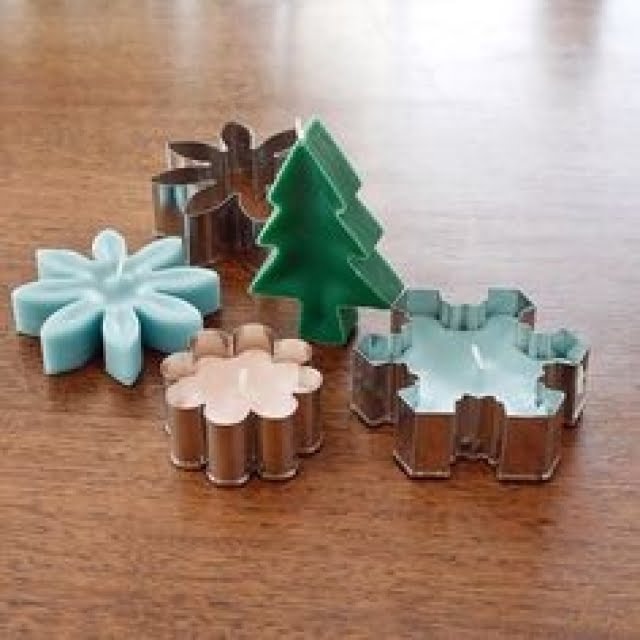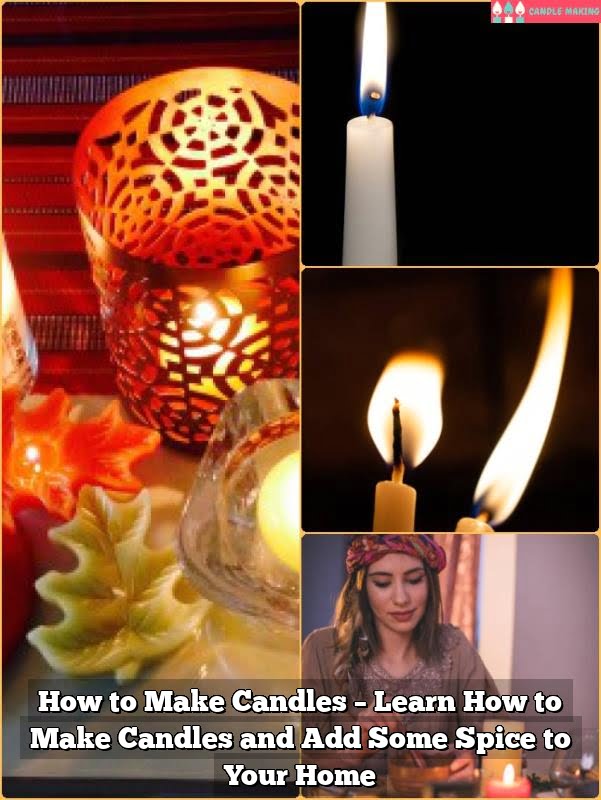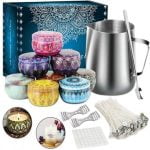Introduction
Making wax candles at home has numerous benefits. Not only can you create unique shapes, colors, and fragrances, but it also makes a fun activity for the whole family that can bring everyone together in a creative way. Perhaps the biggest benefit of making wax candles at home is being able to add personal touches that makes each candle a one-of-a-kind item. This allows you to make the perfect gifts for friends and family or even use them as decorations around your home. Crafting candles from wax gives you a sense of pride knowing that you created these pieces of art from scratch!
Safety
Making wax candles at home involves the use of hot wax, open flames, and other materials. To ensure a safe process, it is important to have the proper safety equipment on hand before beginning. This includes an appropriate heat source for melting wax, such as a stovetop or hotplate; oven mitts and thick pot holders to safely handle heated surfaces; fire extinguisher in case of emergency; glasses or goggles to protect against splattering wax; and a well-ventilated area where ignited candles can be burning without danger of fire. Additionally, you should use nonflammable surfaces such as glass bowls or flask beakers to melt your wax. It is also important to keep any hair restrained away from the flame. Finally, you should never leave any burning candles unattended and check that they are extinguished before leaving the area. Following these tips will help ensure that your candle-making process is a safe one.
Gather Materials
Making wax candles at home can be a fun and fulfilling activity. In order to make beautiful and quality candles, you need the right materials. These materials include wax, wicks, containers, coloring dye, and fragrance (optional).
Wax: Make sure to use the correct type of wax for your candles. Soy wax is best for container candles like tin or jars. For pillars or votives, paraffin or beeswax is recommended. You will also want to determine how much wax you need by measuring out your containers beforehand.
Wicks: Having the right kind of wick will give your candle an even burn. Find wick that is appropriate for the type of wax you are using and measure it against the size of the container before buying it. It needs to measure approximately ½ inch taller than your container because it needs to stand upright in your hot melted wax without falling into it.
Containers: There are a variety of different containers available such as tins, jars, molds, vases, glasses etc… Choose something that will be aesthetically pleasing and make sure that it can handle high temperatures when filled with hot melted wax FOR SAFETY REASONS!
Coloring Dye & Fragrance: While not necessary for making candles at home, adding colour dye and fragrance can enhance the overall appeal of your candle significantly. You only need a small amount (but this varies depending on what you’re working with). Make sure not to overdo either one or else it could ruin the entire look! Check if these ingredients are compatible with whichever type of wax you decide to use before trying them out!
Prepping Your Wax
Making wax candles at home can be a fun and rewarding endeavor. It’s also important to choose the right type of wax when getting started. There are many types of wax available on the market, such as paraffin, beeswax and soy wax. Each one has its own unique characteristics to consider when making your candles. For example, paraffin is more viscous than other types and may require more heating in order to melt. Soy wax is much easier to handle because it melts faster and cools quicker, making it popular for many candle makers.
When prepping your wax for candle making, consider blending different types together for optimal results. This will allow you to customize the texture and burning time of your candles. For instance, if you want a soft, slow-burning candle, use a combination of paraffin and beeswax, as the higher melting point of paraffin ensures that it will maintain its scent longer while still providing some flexibility from the softer beeswax. If you’d like a firmer candle that lasts longer between burns, combine soy wax with beeswax or use stearic acid flakes which will give your candle additional solidity without detracting from its scent throw due to their slow burn rate. Experiment with different combinations until you find what works best for you!
Making Your Candle
A great alternative to pour candle making is using containers. Container candles are simple to create and with a few materials, you can have candles in any size or shape you need. To make your container candle, you’ll need the following items: wicks, wax, a double-boiler set up, a thermometer, containers, a spoon or wooden stick for stirring, and fragrances or colorants (optional). Begin by preparing your containers. Measure the length of your desired wick once you’ve placed it in the container. Set up a double boiler and use the thermometer to monitor the temperature of your wax as it melts. Make sure that the wax has reached 180 degrees Fahrenheit before pouring into desired containers. If you want to add scent and/or colorants, stir them into the melted wax until fully combined. Then slowly pour your melted wax directly into each container until each one is full. Allow them time to cool completely before burning and enjoy!
Coloring Your Wax
When it comes to coloring your wax candles at home, you have a few different natural and non-toxic pigment options available. For a vibrant color that won’t bleed or leave any residue on the wick or holder, liquid candle dyes are ideal. Simply stir in the dye until you achieve the desired shade, ensuring that the room temperature of the dye isn’t too hot as to adversely impact your wax. Alternatively, you can use all-natural plant-based waxes such as bayberry wax, beeswax, and carnauba wax for more subtle effects. Each of these waxes will offer a unique hue and scent for your candles; however, since they have significantly lower melting points than traditional paraffin waxes, extra care must be taken when using them to avoid spillage and dripping. Additionally, you can use naturally derived pigments like powdered cocoa butter or titanium dioxide which provide beautiful tones without affecting the burning performance of your candles.
Finishing Touches
Making wax candles at home can be a fun and rewarding experience. To take your candles to the next level, there are several specialty techniques you can use to make them truly unique.
One technique is called “drip dipping” which involves adding colored wax onto the outside of your candle. This creates a multicolored effect that looks amazing! You can also use this same method with glitter to give your candle extra sparkle.
If you’d like to add some texture to your candles, another great technique is creating “stitched” lines in the wax. To do this, you’ll need a thin metal wire and apply pressure as you move it through the softened wax. The wire will create a line or pattern with its tracks so feel free to get creative and make whatever design you would like!
Finally, one of the most popular techniques is marbling where liquid colors are added directly onto molten wax before it cools. This produces vibrant swirls that blend together nicely and look beautiful when lit! It takes some practice but once you get the hang of it you can have amazing results every time!
Conclusion
Now that you understand how to make wax candles at home it’s time to think about the creative ways you can use them. You can play around with scent by combining different fragranced waxes, or experiment with variations in color or shape. You can also use assorted decorations like glitter, sequins, feathers, and more. Try putting multiple wicks in a single candle and see what effect that produces. Set candles up in clear jars around your home for a soft lighting display or even hang your candles from chandeliers so they radiate outward in an eye-catching pattern. When it comes to the possibilities of making homemade wax candles the possibilities are endless!

Welcome to my candle making blog! In this blog, I will be sharing my tips and tricks for making candles. I will also be sharing some of my favorite recipes.





